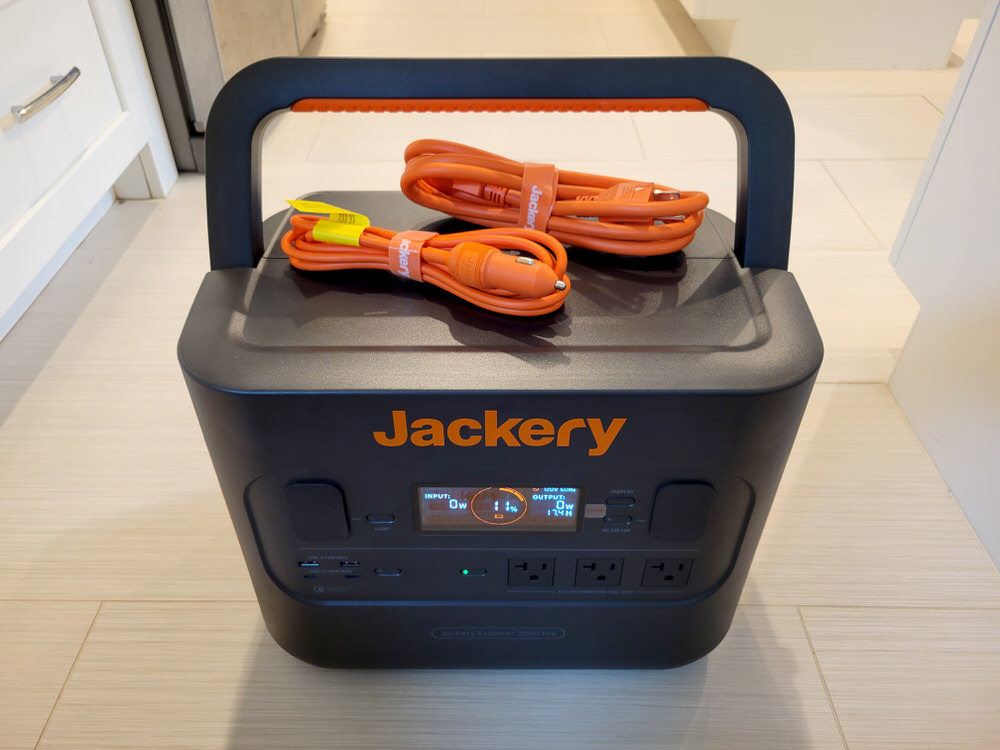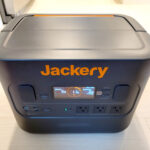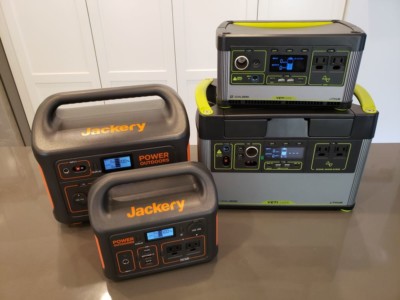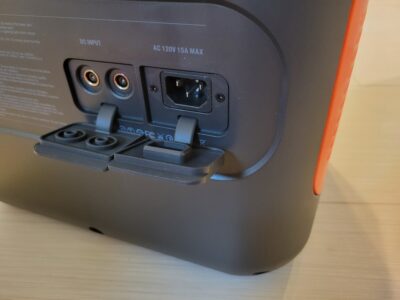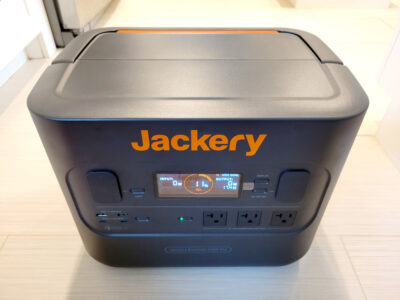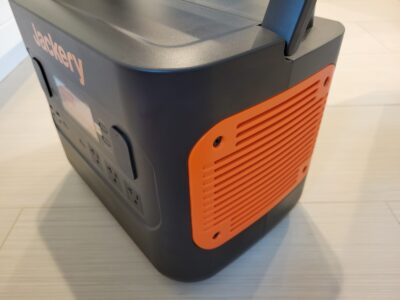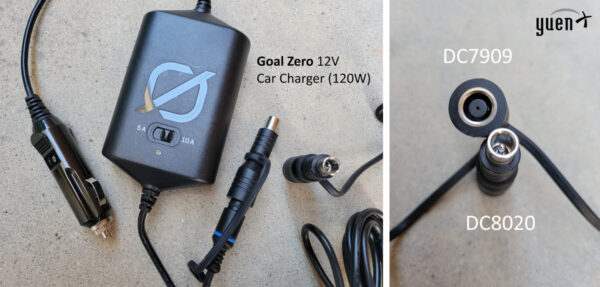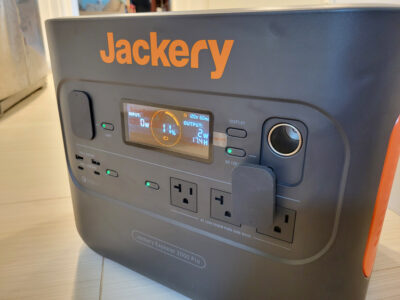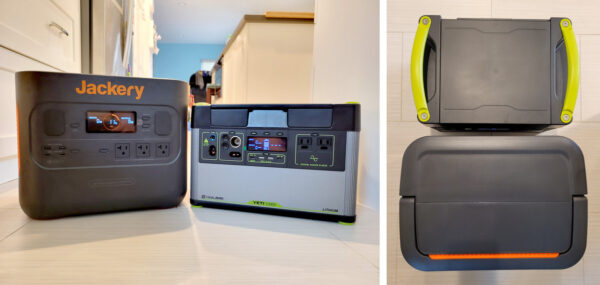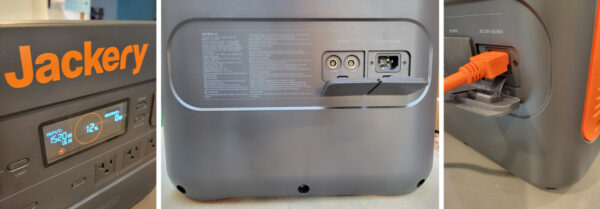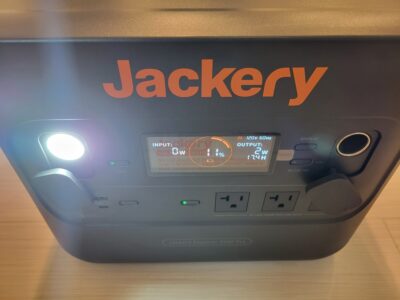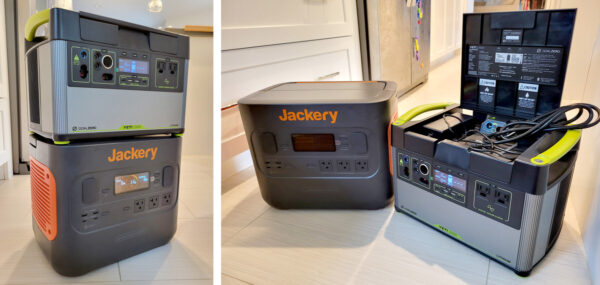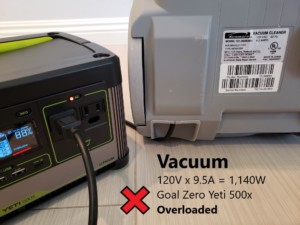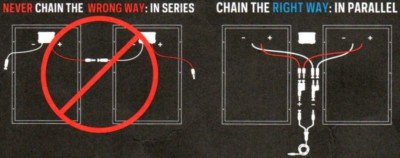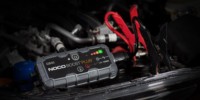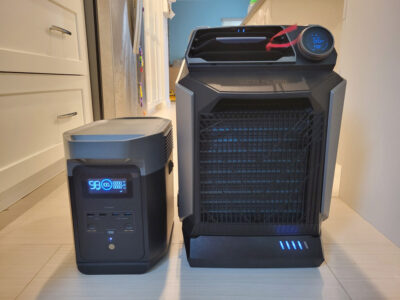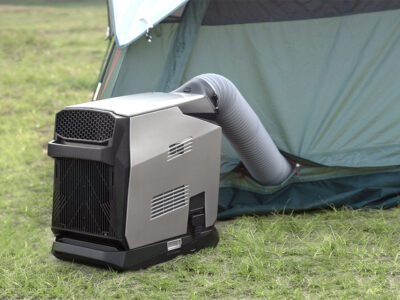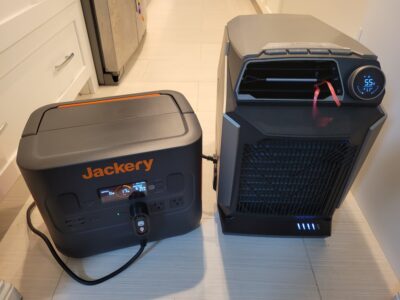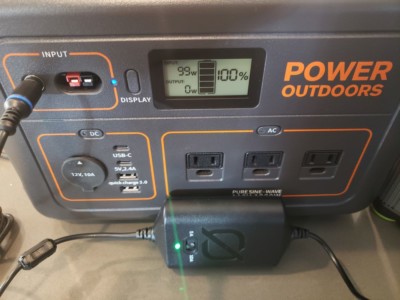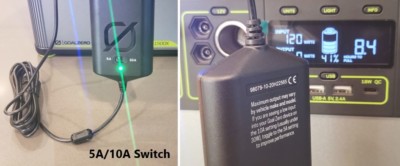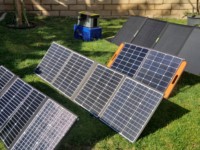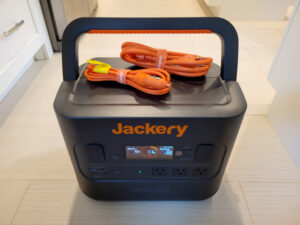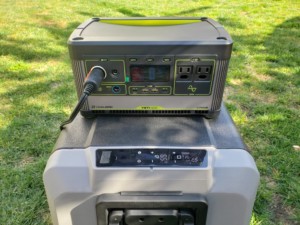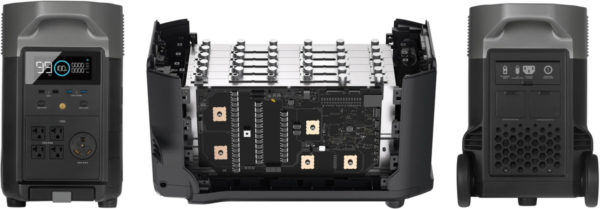Jackery Explorer 2000 Pro Power Station
Contents
Next Jackery Evolution
Upgraded power stations and solar panels had been announced by Jackery during their annual “Jackery Day” since I purchased their Explorer 1000 (E1000) in 2020. What made the E1000 a good pick was its feature set, lower price, lighter weight, excellent customer service, and better value than the Goal Zero Yeti 1000x, although at a lower build quality and with slightly diminished technical engineering. Lately, I had been noticing an influx of impressive products coming out of manufacturers old and new, including EcoFlow’s Delta Pro that wowed me to no end. Some had even started to diversify their portfolio, like EcoFlow releasing its first, portable air conditioner — the Wave — in their quest to gain market share.
It came as no surprise that Jackery had to come up with something new in the face of their Explorer 1000 showing its age. The company in September 2022 announced its new flagship product at Berlin’s IFA consumer electronics trade show, the Explorer 1000 Pro, and in May 2022 in New York, the Explorer 2000 Pro. Some of their touted features was fast-charging that promised to take an empty battery to full within just a couple hours. We love that trend!
So, off we went to sell some of our power stations to buy the newest Explorer 2000 Pro for review purposes. We will be comparing it against our Goal Zero Yeti 1500x and, to some extent, the EcoFlow Delta Pro.
Analysis
The Jackery Explorer 2000 Pro, like Goal Zero, continued with the company’s tradition to use the Lithium-ion NMC (Nickel Manganese Cobalt) battery chemistry over the Lithium-ion LiFePO4 (Lithium Iron Phosphate) that some would swear by. Both have their pros and cons that we will go over later in this review. Competitors Bluetti and EcoFlow had been focusing on LiFePO4 as of late.
Lithium-ion NMC batteries are lighter and smaller, but more volatile and pricier, less usable in extreme temperatures, and have a lower charge cycle count (battery lifetime) than LiFePO4.
Immediately noticeable was the new, more refined, modern look over its Explorer 1000 predecessor, and — FINALLY — a carry handle that could be folded away for easier packing and less wasted storage space. Jackery at last copied the design of the Goal Zero Yeti 500x! The company also upgraded the display to a stunning color one that was readable (but glaring) under direct sunlight and provided a bit more information than before: how much time was remaining before empty or fully charged. Another previous complaint addressed. Nice!
The supplied covers protected the three-brightness-level LED light and car port against dust, but were sometimes finicky or difficult to put back on. One should note that, like EcoFlow, the E2000 Pro no longer supplied a bulky AC power brick to charge with. Instead, you now only needed to plug a cable directly into the unit — simple and clean. Nice move! Goal Zero, are you watching?
With a 2,160Wh battery capacity made by BAK Battery, you could, for example, power a 60W laptop continuously for up to 36 hours, a CPAP machine for 32-72 hours, and a car freezer for 4 or more days, depending on ambient temperature. An equally important pair of numbers to look at is the 2,200W continuous and 4,400W peak output rating with a pure sine wave AC inverter. The two-year-old Yeti 1500x only has 2,000W and 3,500W, respectively. If those numbers do not make sense to you, do not worry. We will go over Continuous vs Peak (Surge) in more detail later. Essentially, 2,200W allows you to run virtually anything, including a miter saw, coffee machine, projector, pressure cooker, microwave, portable air conditioner, or even a Starlink satellite dish. The battery would automatically shut off after 12 hours of idling or very low-level use.
The Explorer 2000 Pro powered our EcoFlow Wave portable air conditioner effortlessly.
How much power is used or produced is measured in Watts, and how much energy a battery can store is calculated in Watt-Hours.
What made the new Explorer a Pro versus its non-Pro models? Simply put: the speed at which the power station could be charged. The 2000 Pro could now be charged from empty to full in as little as 2 hours from the AC wall (120V @ 15A at 1,800W), or as fast as 2.5 hours with an array of solar panels (60V @ 24A at 1,400W max) and optional Jackery parallel cable. It slowed down rapid-charging once nearing 80% for safety reasons. The fast charging significantly outperformed the aging Goal Zero Yeti X series, but was on par with the 1,800W AC (120V) or 1,600W solar input of the EcoFlow Delta Pro. One should note that at 240V, the Delta Pro could charge at a whopping 3,000W AC input.
Another important difference between the Pro vs non-Pro: change in the 8mm connector. Where the older Jackery Explorers and SolarSaga solar panels used the standard DC7909 plug (7.9mm outer, 0.9mm inner diameters), the 2021 and newer models now use the slightly larger DC8020 (8.0mm outer, 2.0mm inner). The center pin was now thicker. Why the change? To accommodate for the increased fast-charging current. That also meant that an adapter (free from Jackery, if one was not included, or buy SolarEnz) was needed for the older products to be used with the newer ones (or even some Goal Zero items). Yes, both companies’ DC7909 connectors were similar enough for many of their goods to be used interchangeably although the barrel design was not an exact match. Jackery moved the DC8020 input — which their new solar panels use — to the rear alongside the AC port.
The front-left of the Jackery found two USB-A and two USB-C PD outputs at 18W (Quick Charge 3.0) and 100W, respectively. USB-C PD is “Power Delivery” to charge laptops, for example, that support it. Three AC and a 120W car port flanked the front-right of the US version. Two, bright orange cables were included: rear AC input and car port output.
Jackery got rid of the Anderson Power Pole (APP) port. Boo! You now needed to buy a DC8020-to-MC4 or DC8020-to-APP adapter cable to connect solar panels with. I was not happy with that move.
Jackery Explorer 1000, 500, 300, and SolarSaga 60W, 100W use the 7.9mm (DC7909) plug. Since 2021, the Explorer 1500, 1000 Pro, 2000 Pro, and SolarSaga 200W use the new 8mm (DC8020) barrel.
Under the hood, the 43 lbs @ 15.1″ L x 10.5″ W x 12.1″ D made the 2000 Pro relatively heavier and larger than its previous generation when extrapolated to the same capacity, but alas, the company had not yet switched to LiFePO4. It was still slightly lighter and taller than the lower-capacity, but better-built Goal Zero Yeti 1500x (45.6 lbs @ 15.3″ x 10.2″ x 10.4″).
Could the E2000 Pro be used while charging? Absolutely. Pass-through power was available, but with the following output limitations to charge devices with while the Jackery was plugged in:
- While on AC input: 1,800W max output
- While on AC and DC input: 1,800W max output
- While on DC input: 2,200W max output. Solar provides DC input
One big advantage that Jackery, EcoFlow, BigBlue, and several other brands had over Goal Zero was the discharge rate when not in use. Both the Explorer 1000 and 300 retained their battery capacity for over a year (with 10-20% loss) while sitting idle, whereas the Yeti 1500x, 1000x, 1000 Core, and 500x all lost 50-90% over the same period. Goal Zero never provided an explanation of why their products drained faster than their competitors, but all companies did advise in their manual to check every 3-6 months to ensure their batteries were between 50-80% when stored long term. Do not let the battery drop to below 20% for prolonged periods, and absolutely never let lithium-ion sit at 0% for a long time or it may no longer be revivable without a specialized tool, if at all.
CAUTION: Lithium-ion (LiFePO4 and NMC) batteries do NOT like to remain discharged at 0% for prolonged periods of time. If you let your battery stay at 0% for too long, you may not be able to charge it again without specialized equipment.
Jackery, unfortunately, was still behind Goal Zero and EcoFlow when it came to expansion options with no solutions for powering a home or expanding the battery capacity with an additional unit. One should note that Geneverse was Jackery’s sister company that was trying to target the home market. There also was no mobile app support due to the Explorer 1000 Pro and 2000 Pro not having WiFi or Bluetooth. That was a shame as neither remote control nor firmware updates were available to provide fixes or feature enhancements.
We were happy to see Jackery keeping its built-in light (with 3 intensity levels) that could stay on or signal “S-O-S”, but this time, it actually blinked the distress signal correctly in morse code. If only minor issues like this could be corrected on older Explorer models via firmware updates… Warranty for the Pro series came with 3 years standard and could be extended to 5 years with registration.
Jackery got rid of the Anderson Power Pole (APP) port and replaced it with its proprietary DC8020 connector. Boo! That meant that solar panels now required a DC7909-to-DC8020 (like SolarEnz) and an 8mm-to-MC4 or 8mm-to-APP adapter. I was not happy with that decision as the APP interface was a much better and more secure design.
What was the difference between the Jackery Explorer 2000 Pro and their Solar Generator 2000 Pro? Technically, “Solar Generator” was a bit misleading as the power stations themselves did not “generate” electricity. Instead, all they did was store energy in their battery cells. The company used the “Solar Generator” term to signify a discounted bundle consisting of an Explorer power station and one or more SolarSaga solar panels. The latter would be used to generate electricity.
The carry bag for the Explorer 2000 Pro was a much-needed improvement over the one provided for the Explorer 1000. It felt and looked more professional and now included a mesh pocket underneath the lid to store cables and accessories with. We always buy a bag to protect our expensive investment against dust and accidental spills.
Overall, the new Jackery Explorer 2000 Pro had made many improvements over its predecessors, including rapid charging, a fresh and streamlined look, colorful and more informative display, stowable carry handle, drop resistance, longer warranty period, and higher AC inverter output, but still stayed limited to being a standalone product without the vast ecosystem of goods and accessories available with Goal Zero or EcoFlow. Nonetheless, Jackery continued to be known for their excellent customer service and had remained a good choice to buy power solutions from.
What’s Good? What’s Bad?
Pros
- Large battery capacity (2,160Wh)
- Fast charging at up to 1,800W (2 hours from AC wall)
- Li-ion NMC battery chemistry provides 5+ years of continuous power
- Lighter and smaller than Li-ion LiFePO4
- Has 500 charge cycles before capacity drops to about 80% from when they were new
- Product could, in theory, be charged up to 2,000 cycles — about 20-25% of total capacity is lost every 500 cycle
- Low discharge rate when idle or in storage
- Good AC inverter with continuous 2,200W (4,400W peak) of output
- Enough to power virtually anything, including miter saw, projector, pressure cooker, CPAP, microwave, or portable AC (such as the EcoFlow Wave)
- 3 AC output ports
- Pure-Sine Wave AC Inverter
- Clean power for sensitive electronics
- Less heat
- Note: Some manufacturers claim to be Pure-Sine when they are actually Modified or Square Waves
- High-quality BMS (Battery Management System) for safety
- Provides built-in overload, overcharge (automatic stop when the device is full), and short-circuit protection
Tip: It is possible to get multiple companies’ products (battery power stations and solar panels) to work with one another once you understand the different connector types, such as Anderson APP, MC4, 8mm, and so on. In one test, I had simultaneously connected solar panels by Goal Zero, Jackery, Suaoki, and Paxcess to the Yeti 1500x’s Anderson port to collect energy from all four!
- 4 USB ports
- USB-A at 18W (Quick Charge 3.0)
- USB-C PD at 100W (Power Delivery for use by devices like laptops)
- Foldable carry handle is strong enough to run a cable lock through for theft deterrence
- AC input requires no power brick. Just plug cable directly into unit
- Can be used in pass-through UPS mode, though that can shorten the battery’s lifetime
- Beautiful, large, color information display with estimate time to empty or full
- Built-in light with 3 intensity levels and SOS signaling
- Improved carry bag (optional) with mesh pocket underneath the lid
- 5-year warranty with registration (3 years standard)
- Excellent customer service
Cons
- Heavy at 43 lbs, but to be expected for a 2,000Wh battery
- Relatively large at 15.1″ L x 10.5″ W x 12.1″ D
- Goal Zero’s Yeti 1500x is (15.3″ x 10.2″ x 10.4″) and Yeti 3000x is 15.3″ x 10.2″ x 13.6″
- Plastic enclosure helps shed some weight but is not as heavy-duty as Goal Zero’s Yeti X line
- No Anderson Power Pole (APP) for solar charging with a standard input
- 8mm connector is no longer the standard size but DC8020 (8.0mm outer, 2.0mm inner diameters)
- Requires adapter to be used with older Jackery or Goal Zero 8mm products
- No mobile app for remote control or firmware upgrades
- No home or vehicle integration kit
- Battery not replaceable like the older Goal Zero Yeti 1400 Lithium
- Leads to landfill/environmental waste. Please recycle responsibly!
- Not waterproof. Keep it away from water splashes, rain, and pool!
Usage
- Turn off any output ports (AC/DC) that are not being used in order to conserve power
- Without anything plugged in, the AC inverter still draws 7W on its own
- To prolong the battery lifetime while in storage, keep the battery fully charged every 3-6 months
- Or, according to some companies, including Goal Zero, keep it plugged in when not in use and discharge it to 50% every 3-4 months
- The charging controller automatically gets disabled once the battery is full
- You may also charge it to 80% for storage, but be sure to discharge to 20% every 3-4 months
- NOT using the battery for a very long time can actually hurt its lifetime
- There is no “memory effect” in this station’s battery
- Note: It is better to NOT let it completely drain before recharging
- Battery, like all LiFePO4 and NMC, slowly drains over time even when station is powered off
- Could take 1-1.5 years to go from full to empty
- There is no “memory effect” in this station’s battery
- Or, according to some companies, including Goal Zero, keep it plugged in when not in use and discharge it to 50% every 3-4 months
CAUTION: Lithium-ion (LiFePO4 and NMC) batteries do NOT like to remain discharged at 0% for prolonged periods of time. If you let your battery stay at 0% for too long, you may not be able to charge it again without specialized equipment.
Continuous vs Peak Output
It is important to understand the difference between Watts and Watt-Hours. How much power is used or produced is measured in Watts, and how much energy a battery can store is calculated in Watt-Hours. See the “Calculations” section below for more details.
How much energy a battery can store is measured in Wh (Watt-hours), and how much power is used or produced in W (Watts).
- AC Inverter: Converts battery (DC) power into AC
- Explorer 2000 Pro provides 2,200W continuous output with a 4,400W peak
- Peak/Surge (Starting): Nearly every device initially draws extra power to turn on. The highest amount it pulls is the Peak. As long as that number is below 4,400W, it can be STARTED
- Turns on OK (PEAK under 4,400W):
- Freezer starts at 400W (peak), runs at 150W once on
- Coffee maker starts at 1,400W (peak), runs at 800W once on
- Will NOT turn on (PEAK over 4,400W):
- A heavy-duty tool starts at 4,900W (peak), runs at 1,900W once on
- Turns on OK (PEAK under 4,400W):
Most devices power on at a higher (Peak) wattage than when they are already on (Continuous). Therefore, if its peak exceeds the power station’s max, it may not be able to start.
- Continuous Output (Running): Once devices are on, as long as they keep drawing less than 2,200W total, they will stay ON until the battery runs out
- CONTINUES running (under 2,200W)
- 100W TV + 60W laptop = 160W
- COULD STOP running (over 2,200W)
- Temporary overdrawing beyond 2,200W for a few seconds is okay. A quality BMS will protectively shut down the battery if the surge does not end after a while. Regularly going over for a prolonged time can ruin the battery in the long run
- 100W TV (120W peak) + 1,000W Home AC (4,000W peak) + 800W Coffee maker (1,400W peak) + 400W appliance = 2,300 W. Probably will stay on for a short period
- Add 1,000W mower (1,400W peak) = 3,300W. Battery will definitely shut down
- CONTINUES running (under 2,200W)
Solar Panel – Warning
This power station can be charged with one or more solar panels as described in the “Ports > Input” section. There are SOME PRECAUTIONS you must take to minimize battery damage and/or injury to life/property:
- Never exceed the maximum Voltage (V) or Amperage (A) of the power station’s charging port
- If you want to use 2+ solar panels to charge faster:
- Do not mix them with different V or A as the output might get reduced (less energy generated)
- Do not daisy-chain them in sequence/series as that can exceed the power station’s maximum V or A
- Always connect them in PARALLEL with a Y-branch or Combiner cable
- Keep the battery out of direct sunlight while charging. You may have to use an extension cable to keep it in the shade
Wondering what size solar panel to get? See the “Calculations” section below.
Calculations – Size & Time
What size battery should you get? How long will it power your fridge for? How long will it take to recharge? The below calculations can help answer those questions and are rough ESTIMATES as conditions, battery quality, and age can vary.
Time to Charge Battery
- Calc: Hours to charge battery = Battery capacity (Wh) / Input Wattage
- Note: As battery approaches 75% full, the input charge will increasingly be slowed down to prevent overcharging
- AC Wall: 1,800W @ 1.2 hrs [2,160 Wh / 1,800W]
Charge Time with Solar
- Calc: Hours to charge battery = Battery capacity (Wh) / (Panel Wattage x [0.5 or 0.75])
- In a perfect lab environment, solar panels charge at the listed wattage
- Expect to only receive 50-75% on a good, sunny day (ie. 75W – 113W for a 150W panel), depending on panel’s age, component quality, and weather
- Two 400W solar panels: as fast as 3.6 hours [2,160Wh / (2 x 400W x 0.75)]
- Tips
- Keep charging even when overcast as the panels will STILL collect energy
- Underproduction: If a 200W panel is not making enough (ie. only 50W) due to bad conditions, adding extra ones (ie. two more 200W) can generate a higher, combined output (ie. 50W + 110W from the two panels = 160W total)
- Overproduction: If the panels make more (ie. 400W) than the maximum the power station charge port can take (ie. 120W), only the max (ie. 120W) will go through
Watts Used/Produced
- Calc: Watts used or produced by device = Voltage x Amperage
- Vacuum with 120V @ 9.5A uses 1,140W
- Solar panel with 12V @ 10A can produce up to 120W
Ideal Battery Size
- Calc: Battery capacity (Wh) = Watts used by device x Hours needed for / 0.85
- 10-15% of power is lost during power conversion
- 45W car fridge needed for 8 hours: Minimum 424Wh power station (45W x 8 / 0.85)
How much energy a battery can store is measured in Wh (Watt-hours), and how much power is used or produced in W (Watts).
Time Before Battery is Empty
- Calc: Hours available for device = Battery capacity (Wh) x 0.85 / Watts used by device
- 10-15% of power is lost during power conversion
- 60W laptop with 505Wh battery: Up to 7.2 hours (505Wh x 0.85 / 60W)
Time to Charge Device
- Calc: Hours to charge device = Device’s battery capacity (Wh) / Input Wattage
- 60W laptop with 200Wh battery: Up to 3.4 hrs (200 Wh / 60W)
Conversion to mAh
- Calc: Powerbank-equivalent capacity (mAh) = Battery capacity (Wh) / Voltage x 1000
- 1 Ah = 1000 mAh
- Jackery Explorer 2000 Pro @ 3.7V = 583,783 mAh power bank (2,160 Wh / 3.7V x 1000) or 200,000 mAh @ 10.8V
Tips and Suggestions
Safety
- Always test your devices with the power station before you depend on it on the go
- Lithium-ion batteries are volatile
- To minimize fire damage to your belongings or loved ones, store the power station in the garage and not inside the house. Best storage is a dry, cool place
- You cannot bring a battery of this capacity on a plane
- With the right BMS, quality batteries, and other factors, the power station can be STORED in the car during hot temperatures
- Keep the battery out of direct sunlight. I usually store it on the floor of the car and crack open the windows a tiny bit
- Do not USE any power station in a tightly enclosed area as it can overheat
- Do not USE in the car if temperatures fall below or exceed the battery’s rated, operating temperature
- Car charger: Only use it while the car is RUNNING. Otherwise, you may deplete your car’s battery and leave you stranded
Jump Start Car?
A battery power station like this one cannot be used to jump start a car. Instead, I suggest getting a small, portable one specifically made for that, such as my favorite: NOCO Genius Boost Car Jump Starter (Lithium Battery).
Portable Air Conditioner
The EcoFlow Wave is a portable air conditioner that accepts both AC and DC input. The company, of course, recommends using its own Delta power stations for better efficiency and longer runtime because they can draw directly from DC power. In a pinch, any battery or generator capable of providing the Wave-required input wattage could be used, but keep in mind that AC power loses some energy due to conversion to DC.
Goal Zero 12V Car Charger
I wanted to point out how GAME-CHANGING the Goal Zero 12V Car Charger is (Buy on Goal Zero/Amazon). The company inexplicably does not promote its benefits enough, but it can be used to charge batteries at a whopping 120W when the car port supports 10A (like my Toyota Sienna and Highlander did!) All other car chargers I have (Jackery, Rockpals, Paxcess) only go up to 60W, but the Goal Zero can double that! What does that mean? Faster charging while driving around town! I bought two — one for use with the Yeti 1500x and another with the Jackery Explorer 1000.
The Goal Zero 12V Car Charger can charge a supported Goal Zero, Jackery, Bluetti, or EcoFlow battery at a whopping 120W!
Use With Other Brands
Nearly all of the leading power station manufacturers can be used with competing products or accessories — solar panels in particular.
As long as the panels or different Watt-capacities produce the same VOLTAGE, you will be able to safely use them with the Jackery Explorer 2000 Pro. However, be sure to NOT exceed the power station’s rated input Voltage or Amperage! All you would generally need to interconnect is to buy adapter cables that convert from MC4, APP, or other connector types to the Jackery’s (8mm) DC8020 port.
I had previously tested my Goal Zero Yeti 1500x with the company’s own Nomad panel and those by Jackery, Paxcess, and Suaoki. It was a bliss in interconnectivity! What that means is that you can buy lower-priced solar panels that may produce the same capacity as those made by the power station’s manufacturer. You do not always have to buy their own branded products as long as the substitutes stay within the rated limits.
Final Thoughts
Jackery launched a new Pro series of its Explorer brand with faster charging, a new 8mm connector, longer warranty (5 years with registration), and a sleeker, more modern design. They unfortunately got rid of the standard Anderson Power Pole (APP) port (boo!) and still have not yet provided a mobile app for remote control or firmware updates. Expansion options also continued to be limited with no integration into the home and no ability to connect an additional battery to extend its runtime capacity.
As a standalone battery, however, the Explorer 2000 Pro with its large AC inverter output was capable of powering virtually any appliance or device I could throw at it — without the noise and pollution of a gas generator. It also worked well with our EcoFlow Wave portable air conditioner.
The company’s excellent customer service and roughly $1/Wh pricing continued to help Jackery be a value-added brand to be reckoned with and had remained a solid recommendation for portable power. At some point, I do hope that Jackery would expand into the home and/or vehicle integration market that Goal Zero and EcoFlow had already been establishing a market share for.
Where To Buy
- Jackery
- Adapters
- SolarEnz DC7909-to-DC8020 (8mm) / SolarEnz 8mm-to-MC4 / iGreely 8mm-to-APP
- Goal Zero
- EcoFlow
- Bluetti Power Station: EP500 (LiFePO4)
Related Posts
- Power Generators: Gas vs Propane vs Battery Station (and Solar)
- Ultimate Reference: Power Station Comparison
- EcoFlow Wave Portable Air Conditioner
- Reviews
- Jackery Explorer 1000 / Explorer 300
- Goal Zero vs Jackery: Yeti 1000 Core vs 1000X vs Explorer 1000
- Goal Zero Yeti 1500x / Yeti 1000x / Yeti 500x
- Bluetti EB70S LiFePO4
- BigBlue Cellpowa500 LiFePO4
- Rockpals 500W / nrgGo 400
- EcoFlow Delta Pro LiFePO4
- EcoFlow Wave Portable Air Conditioner
- Quick Look
- Announcements
Other Useful Topics
Power Station Comparison
Check it out!
Ultimate Reference: Power Station Comparison – We summarized the specifications of many of the power stations we had come across or reviewed all in one place.
Gas/Propane Generators vs Battery Power Stations
In July 2020, I wrote about this topic after many asked what their differences were. In short, gas/propane generators can run virtually forever but are loud, dirty, and potentially quite dangerous. Battery power stations, on the other hand, are more portable, silent, less volatile, and can be operated indoor, but depend on external power (like solar) to recharge. Where gas/propane are used to GENERATE electricity, batteries STORE them for later use. Personally, I am a fan of the latter because they are so easy to carry around and are safer to use.
Who is Jackery?
According to the company, its name was derived from “Jacket” and “Battery” as a homage to its Apple jacket battery manufacturing roots. The company was founded in 2012 by a former Apple battery engineer and claims to have “launched the [World’s] first… Lithium Portable Power Station” three years later. It had partnered with Honda to brand the Japanese namesake onto a variety of battery products.
Battery Technology and Safety
Goal Zero debuted with Lead-Acid batteries that were bulky and heavy. Today’s devices use Lithium-ion — commonly Nickel Manganese Cobalt (NCM) or Lithium Iron Phosphate (LiFePO4 / LFP) chemistries — for more power in a smaller, lighter package. NMC, however, is more volatile than LiFePO4 and becomes riskier as more cells are packed together. Goal Zero and Jackery used NMC for some time whereas EcoFlow and Bluetti use LiFePO4. Jackery launched its first LiFePO4 model in mid-June 2023 and Goal Zero in October that year.
- How much energy a battery can store is measured in Wh (Watt-hours), and how much power is used or produced in W (Watts)
- The higher the Watt-hour (Wh) capacity rating, the more dangerous the battery could become if not handled right
The quality of the battery cells and the BMS (Battery Management System) are crucial for safety.
Cell Manufacturers
Battery cells made by LG and Sony are among the best in the hobbyist world as are Sanyo/Panasonic and Samsung. Goal Zero uses LG. Jackery also uses LG or BAK (a leading Chinese brand). EcoFlow makes its own. During my years of research, I found that use of lower-quality batteries could pose a serious risk to life and property and should become a crucial part in deciding what to buy.
Safety
The second part in a battery’s safe operation depends heavily on the design and BMS (Battery Management System). Some BMS manufacturers, unfortunately, overstate their capabilities that could lead to catastrophic failure.
- Design should allow for proper, thermal cooling, use quality components, and obtain proper certifications
- Batteries made by known manufacturers are less likely to fail
- BMS should sufficiently restrict the battery from going past its capabilities
Li-ion: LiFePO4 vs NMC
There had been a lot of debate over whether Nickel Manganese Cobalt (NMC) or Lithium Iron Phosphate (LiFePO4) was better. Both are Lithium-ion batteries. Goal Zero, Jackery, and most of today’s power station manufacturers use NMC, but why do EcoFlow and Bluetti use LiFePO4 when they are bulkier and heavier? There are important distinctions, but the best battery is the one that meets all or most of your unique needs.
Charge Cycles
One of the most significant differences — and buying factors — is the charge cycle count for both battery chemistries. It measures how long the battery can be used for before it must be replaced or thrown away. LiFePO4’s count is as high as 4,000 cycles (as of 2023) whereas NMC is 500+. However, both have a useful life that can range between 3,000 – 5,000 cycles (even as much as 7,000 with proper care). But how does the count determine longevity?
Let’s look at Li-ion NMC as an example. It loses about 20-25% of total capacity after every 500 charge cycle. That means after the first 500 cycles, the battery drops 20% from when it was new, then another 20% after the next 500 cycles, and 20% again after that one. It would take roughly 1,500 charging cycles to have the battery last only half as long as when it was brand-new. Thus, it should be usable for 2,000+ cycles or about 6-10 years. Li-ion LiFePO4 can last longer.
CAUTION: Lithium-ion (LiFePO4 and NMC) batteries do NOT like to remain discharged at 0% for prolonged periods of time. If you let your battery stay at 0% for too long, you may not be able to charge it again without specialized equipment. Keep them at between 20-80% while in storage to maximize their lifetime.
LiFePO4 Advantages
- Safer, less volatile, and thus cheaper to manufacture
- Higher charge cycle: 1500-2000 (10+ years). NMC: 500+ (6-10 years)
- Usable in more extreme temperatures (-4F/-20C to 176F/80C). NMC: only 140F/60C max
- Holds 350-day charge. NMC: 300
NMC Advantages
- Smaller and lighter. Allows for more portable products
- Faster charging

